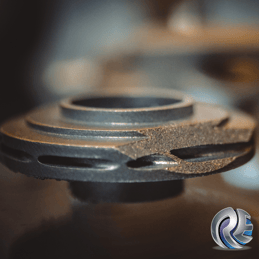One of the major advantages of industrial 3D printing is the design freedom that it allows. Traditional manufacturing restrictions can hinder creativity and innovation. But additive manufacturing gives engineers the opportunity to create complex features that are difficult or even impossible to machine.
Still, it’s important to keep in mind that just because you can design a part virtually any way imaginable doesn't necessarily mean you should.
As with any manufacturing method, there are best practices for additive manufacturing that ensure you get the highest quality parts at the best possible value.
4 Mistakes to Avoid When Designing 3D Printed Parts

Sometimes best practices are about implementing certain techniques, while other times they’re about avoiding them. Here are the top 3D printing design mistakes to avoid:
1. Sharp edges
2. Substantial volume transitions
Injection molding best practices call for uniform wall thicknesses, and this same principle applies to Design for Additive Manufacturing (DfAM) as well. You won’t be quite as restricted with 3D printing, but you’ll still want to avoid moving abruptly from a thin-walled feature to a large, dense section whenever possible.3. Ignoring the design orientation
Before you even start designing a part for 3D printing services, think through which surfaces are critical so you can determine how you want your part oriented in the print bed. Certain parts may require support materials during 3D printing, so we’ll want to be sure that we’re using these supports on non-critical surfaces.
RE3DTECH’s 3D printing experts can always make these determinations on your behalf based on part geometry, but we recommend calling out the preferred orientation in your 2D drawing as a best practice.
4. Large volumes
Solid parts with a large volume to surface area ratio are common in CNC machining because with subtractive manufacturing, it’s faster and more cost-effective to remove as little material as possible.
With additive manufacturing, on the other hand, the more we can reduce volume (i.e. overall material usage), the better the cost, lead time, and quality of the part. That’s why we recommend decreasing the volume and increasing the surface area in your part design.
A volume to surface area score of 0.8 - 2.0 is ideal for a 3D printed part.
If you have any questions about DfAM best practices, the experts at RE3DTECH are here to help. Book a time to speak with our team about your project!
